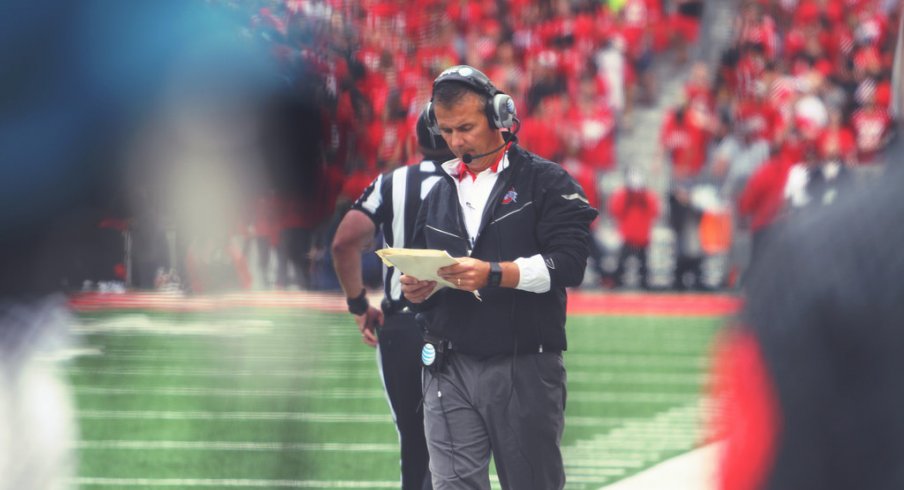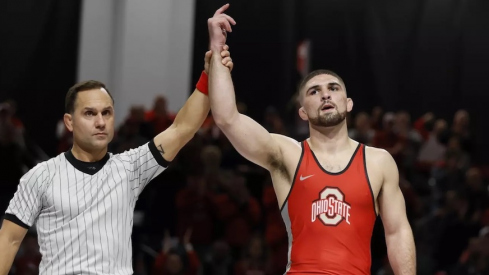Despite being enough to hold on to the No. 1 spot in both polls, few close to the Ohio State football program will tell you they were pleased with Saturday's 20-13 home win over Northern Illinois.
Although the defense once again played like a championship unit, the offense struggled to put up points throughout a contest in which the Buckeyes were 34-point favorites. Both quarterbacks Cardale Jones and J.T. Barrett were given the chance to lead a unit expected by many to be the most explosive collection of talent in the nation, yet ultimately had to rely on a defensive touchdown to come away with a win.
As head coach Urban Meyer met with the media following the game, he reiterated the tone felt by many and acknowledging that the offense has questions that must be answered. But the man who doubles as the program's CEO and ultimate leader of offensive game planning failed to place blame in one specific area, instead saying both the coaches and players must improve.
To many fans, coaching is effectively a code word for the play-calling when things go awry offensively, and every coordinator in program history has been publicly questioned before. Even the beloved and recently departed Tom Herman was criticized during his stint with the Buckeyes, first for the loss to Michigan State in the 2013 Big Ten title game, and again after failing to beat Virginia Tech last fall.
For many, the easy answer for the 2015 offense's struggles lay at the feet of Herman's replacement, Ed Warinner. After reviewing the tape though, that assessment seems unfair.
As we all know by now, the Huskies opened the game up with the same three-man front that gave the Buckeyes some trouble against Hawai'i the previous week. Center Jacoby Boren would almost always have a nose guard lined up directly across from him, while two ends played just outside tackles Taylor Decker and Chase Farris.
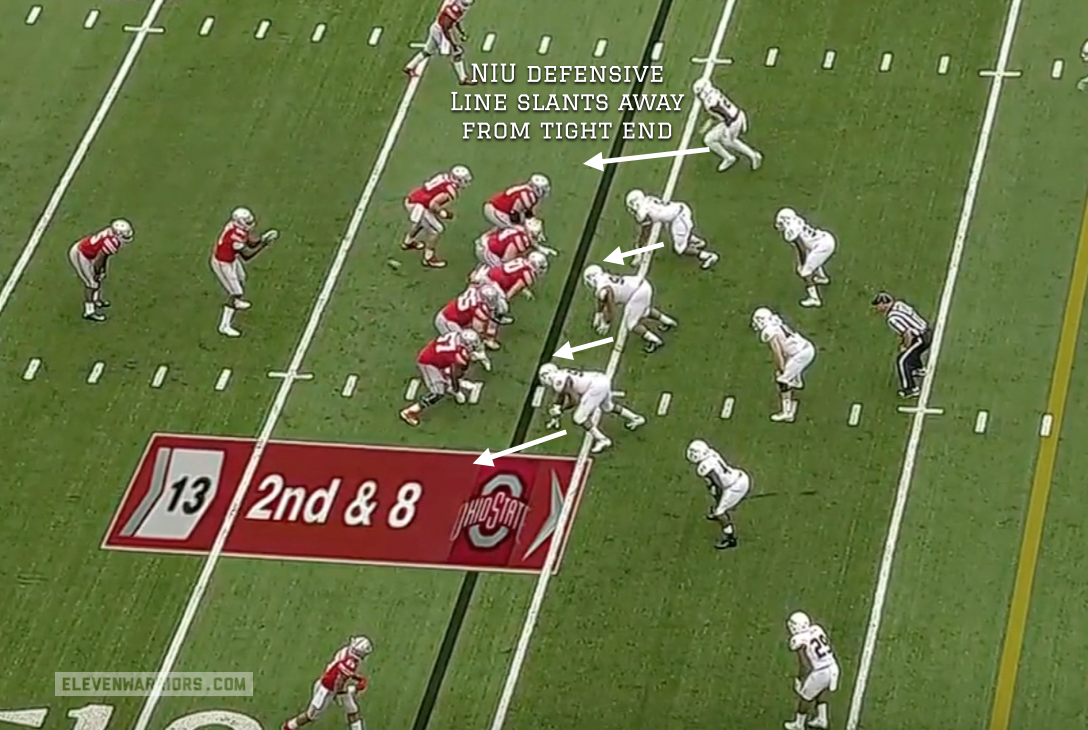
To make things difficult though, this unit, often along with an outside linebacker, would slant across the face of the blocker in front of them, away from the strength of the formation. This slant was effective at clogging up inside runs like the 'tight zone' and 'Power-O' that are the foundation of the Buckeye offense, not allowing the guards to get to the second level and block the linebackers.
In the example below, we see right guard Pat Elflein (No. 65) pull left to lead Elliott through the hole. But on his way there, the end to that side has slanted down inside, picking him off and occupying two OSU blockers, which ultimately leaves the inside linebacker free to make an easy tackle.
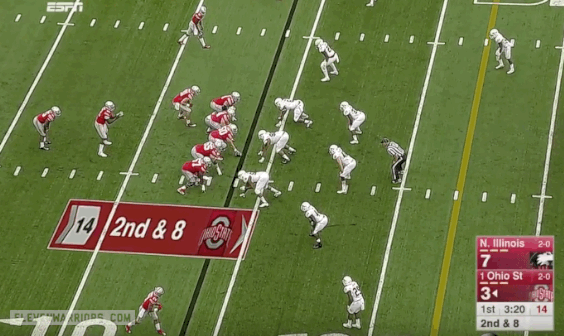
But while it didn't seem like the Buckeye offense would start ripping off chunks of yardage in the running game until the fourth quarter, Warinner and the coaching staff adjusted to the slant almost immediately. The Huskies often slanted to the side opposite of Elliott, given the natural handoff motion that would occur on inside handoffs.
So instead of fighting these angled rushes, Warinner decided to let the NIU defensive line take themselves out of plays, flipping the direction on his tight zone runs. Now, instead of Elliott lining up of the right of the QB and looking to run left, he'd immediately look for a cutback lane in the area now vacated by the defense.

This may seem like a small adjustment, but the biggest difference came for the offensive line, which now used a 'down block' that pushed the Husky front further in the direction they were headed instead of trying to get around them to cut off penetration. In the above example, the entire right side of the offensive line completely collapses the defense with this technique, forcing a safety to come up and make the tackle after Elliott has picked up six yards and a first down.
The Buckeyes doubled down on this adjustment though, calling for the split zone, which allows the line to down block in one direction while the tight end comes back in the opposite, kicking out the defensive end and creating a natural cutback lane for the back.
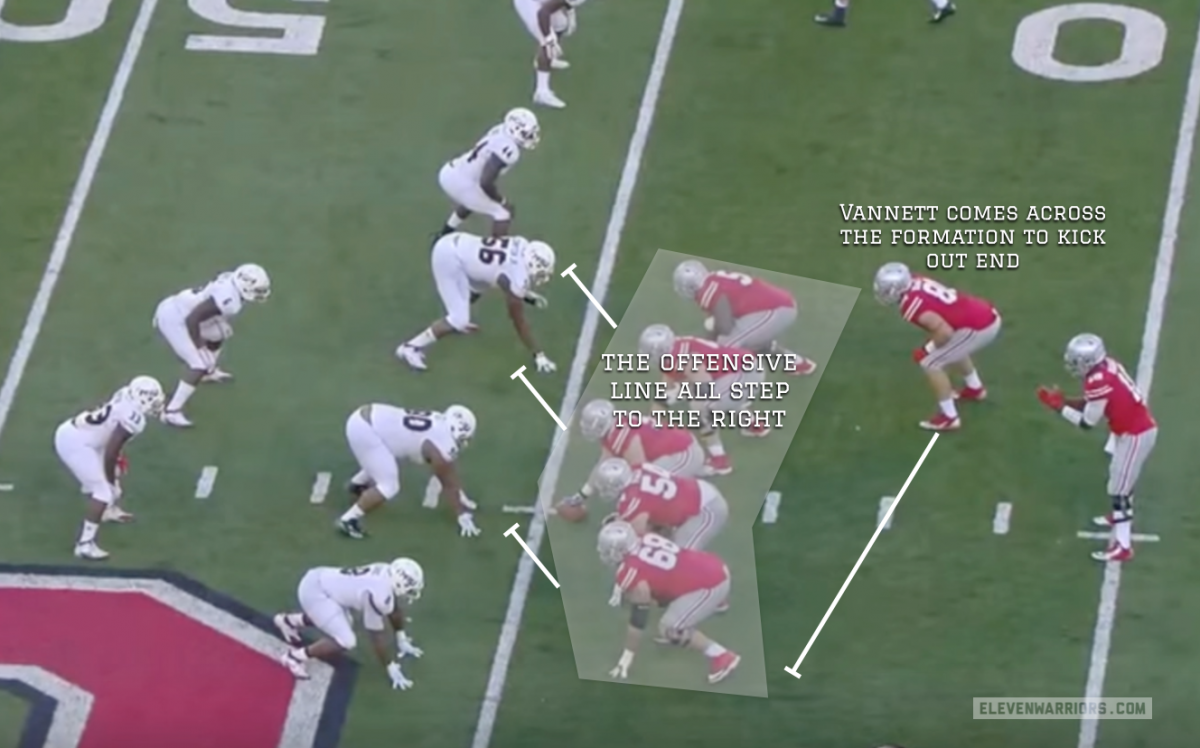
Though he lacked a signature breakaway touchdown run that day, Elliott was finally able to hit the hole hard and pick up solid chunks of yards that kept the chains moving.

But Northern Illinois was also stacking the box beyond their three down linemen, often putting seven men near the line while playing a conservative, three-deep coverage behind them. This meant the Huskies were vulnerable on the edges, something the Buckeyes began attacking more and more as the game went on.
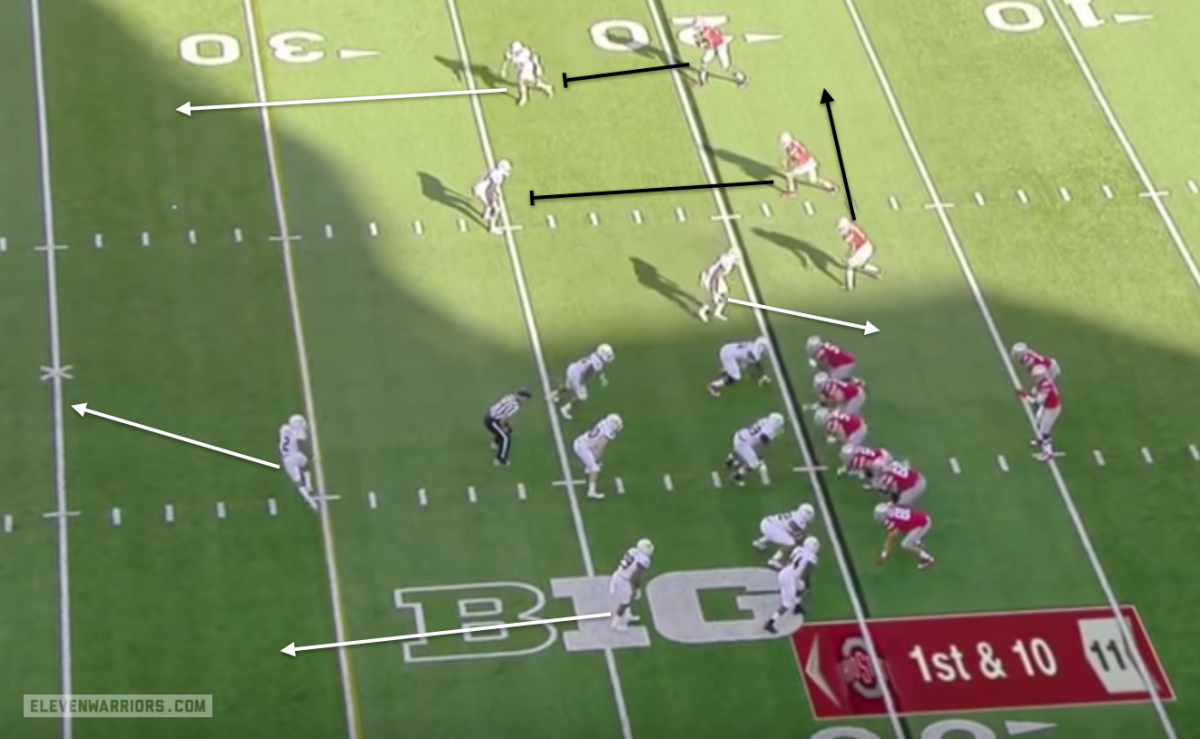
For the first time we'd seen this year, the Buckeyes began calling for bubble screens to the 'H' receiver, getting the ball to the edges quickly and letting play-makers like Dontre Wilson do their job.

Additionally, the Buckeyes regularly called for the crack-sweep that many of us know so well from its success in the Sugar Bowl, and has become part of the wardrobes of many within the 11W commentariat, to attack horizontally. This time though, Curtis Samuel often got the nod to run behind Elliott, who by now must be considered the best blocking back in the country.

But the success of this concept perfectly captures why the Buckeye offense struggled so much that afternoon. On the game's opening play from scrimmage, Samuel galloped for 25 yards with this exact play-call, only to see it negated by an illegal motion penalty. While it technically only cost Ohio State five yards, in reality it was a 30-yard swing. This was just one of the six such penalties the Buckeyes would incur that day, nearly all of which could have been avoided.
The mental errors didn't stop there though. All three interceptions were bad decisions by the quarterbacks, the first from Cardale Jones coming out of his hand much too late, while the final two should have never been thrown at all given the placement of the defenders.
Even when the offense was seemingly moving, they were hurting themselves. On a critical 3rd-and-5, Dontre Wilson caught a nice pass on a short "stick" route and held on after getting hit immediately. The only problem? His route went only four yards.

But the Buckeyes were also sloppy in the fundamentals of the game. Four fumbles, and a number of bad snaps killed drives, even when the offense retained possession. Near the goal line, Braxton Miller simply dropped a snap on a play that was otherwise perfectly called.
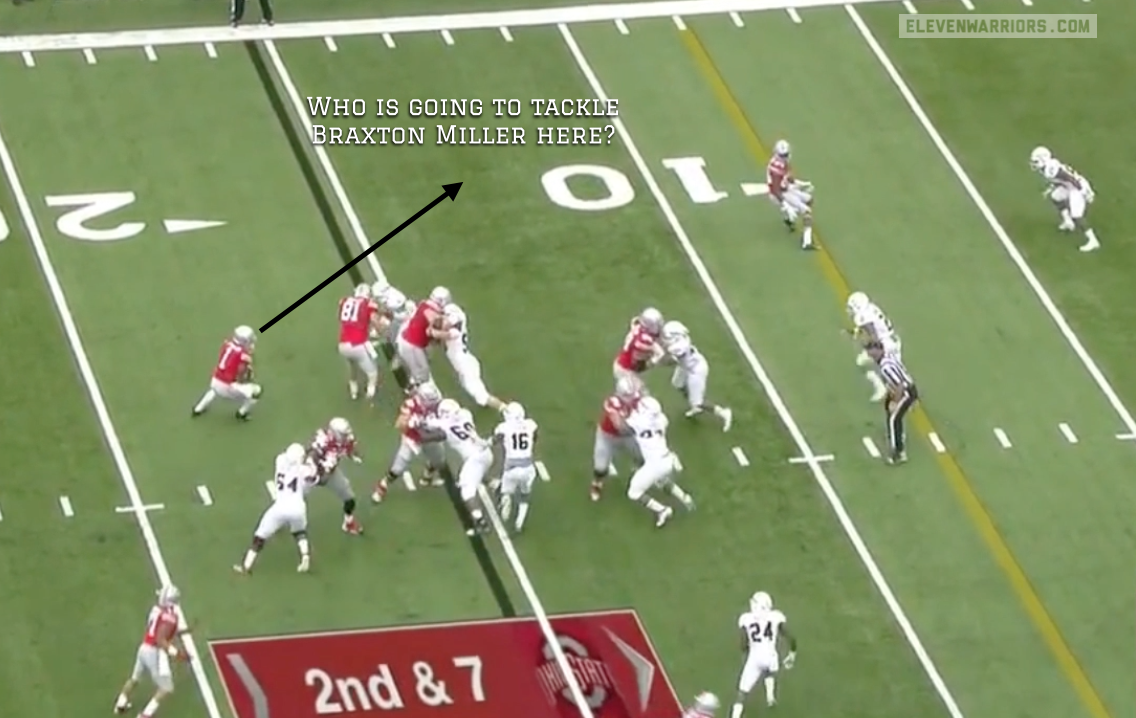
Normally, Miller would've been turning the corner outside on a counter-trey, but instead was gathering himself after picking the ball back up. Had he caught the snap immediately, he would've been one-on-one with the free safety who was coming all the way from the middle of the field, a matchup Miller almost always wins.
To compound the issues, on the very next play Decker would be beaten by inside move from the defensive end, collapsing the pocket and forcing Jones to scramble outside. The QB would eventually throw the ball away after missing an open Michael Thomas streaking across the middle for an easy first down, and potential touchdown.
On all three trips to the red zone Saturday, the Buckeyes would fail to find the end zone and it should be abundantly clear why. The OSU offense simply didn't execute as a whole, instead looking like a recently assembled collection of parts.
These failures can be spread around the whole unit, and every offensive meeting room at the Woody Hayes Athletic Center will undoubtedly be a place we'd all like to avoid today. However this group must get better in their time together on the practice field.
There is a reason why the expectations for the unit are so high. There are talented players at every position, and some of these young men may be the very best at what they do in the entire country. Additionally, the staff showed an ability to adjust within the course of the game, correcting the game plan to account for what all three defenses they've faced have shown.
However, the staff must find a way to eliminate the minute errors that plagued the team against Northern Illinois, Warinner included. As the man responsible for the offensive line, his unit was as guilty as any on Saturday, and hardly resembled the unit that pushed around defenses last December and January.
But the coaches don't have all the time in the world to figure this out either. Western Michigan doesn't have the same track record of success coming out of the MAC as the Huskies, but once Big Ten play commences Buckeyes the week after, the margin for error will be even smaller.
The talent is there. The experience is there. The scheme is there. Can they put it all together? Given Meyer's track record of success, there's no reason to suspect otherwise at this point.
